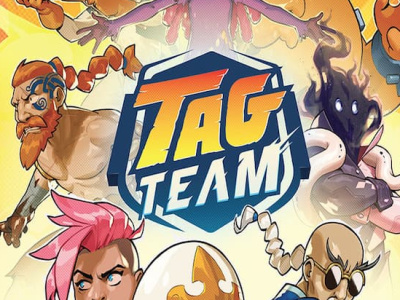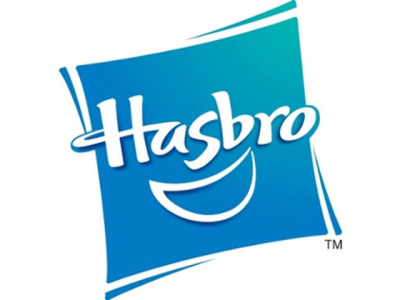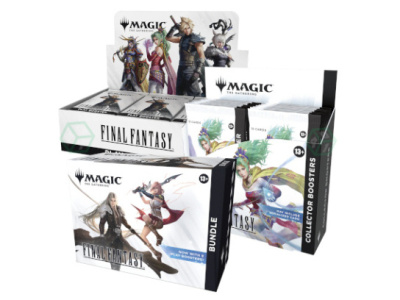 Get In The Game is a weekly column by Dan Yarrington, managing partner of Myriad Games in Manchester & Salem, New Hampshire, Treasurer of the Professional Game Store Association, and Editor-in-Chief of GameSalute.com. This week, Yarrington takes on the question of the role of game distributors.
Get In The Game is a weekly column by Dan Yarrington, managing partner of Myriad Games in Manchester & Salem, New Hampshire, Treasurer of the Professional Game Store Association, and Editor-in-Chief of GameSalute.com. This week, Yarrington takes on the question of the role of game distributors.Welcome back to to Get In The Game, a column that focuses on proactive ways we can improve the games industry.
Should hobby games distributors die? Are they dinosaurs of a bygone era before more efficient information systems allowed publishers to sell direct to retailers efficiently? Do they stifle the growth capability of the industry by eating margin that would otherwise go to publishers and/or stores? In this column, I’ll examine some of the failures, strengths, and challenges of hobby distributors.
In the current marketplace, distributors purchase goods from publishers and resell those goods to stores who then sell them to the end user. This is why many in the industry frequently refer to the "three-tier system:"
Publishers -> Distributors -> Stores
In reality the chain from game design to the final player is a bit more complex:
Designers -> Publishers -> Distributors -> Stores -> Players
In this chain, designers create the games, publishers handle printing and much of the promotion for their titles, distributors handle the logistics of getting those products to thousands of stores, and the stores focus on sales to their player communities. This becomes a vast ecosystem when you consider the interplay of feedback from players directly to designers, directly to publishers, and directly to stores. These folks are on the front lines, interacting with gamers on a daily basis and actively selling games. Distributors provide the warehousing, consolidated shipping, billing and credit management, and information transfer.
The publishers bear the financial risk of developing and printing games. There’s a ton that goes into that process, so most are not keen to take on distribution responsibilities as well. From the publisher’s perspective, selling and shipping to a dozen distributors is much easier than dealing with hundreds or thousands of stores. The stores can order in single quantities rather than having to commit to case quantity orders from hundreds of publishers. Distributors provide consolidated shipping, so the cost of shipping a few copies of a game is mitigated since they’re shipped with a bunch of other titles from various publishers. The players benefit in that they have quicker access to a wider variety of titles in a shorter time frame. Provided that publishers and distributors maintain sufficient stock levels, stores can lean on that inventory availability to special order any title to arrive in their stores inside of a week (usually 3-5 business days).
Margins are squeezed thinner with each participating layer in the chain, as each partner in the process needs to cover their operating costs and have room for profitability. We’re an underfunded industry in general, and many publishers feel they cannot afford the extra cut required to sell into distribution or stores. In many significant cases, publishers sell direct to the stores and the players as well as through distribution. These larger publishers are in a tight spot competing with their sales partners. They can afford to offer better deals (both in margin and support) directly to stores and still have higher net margins, but they need to cover the infrastructure and additional expense of extra staff to handle all those separate sales. Rather than shipping pallets of product, they’re shipping single cases or handfuls of games to thousands of separate outlets. And that’s before you even get into the money.
There’s also a significant time delay in the transfer time from each link in the chain to the next. So a publisher could get the game in their warehouses on Friday the 1st, ship to distributors on Monday the 4th, have it arrive at all distributors by Monday the 11th, ship to most stores to arrive by Wednesday the 12th, and release that day -- a full 11 days after the product was ready to sell. By contrast, if those shipments went directly to stores, the product could be there by Wednesday the 6th or Friday the 8th. The need to stagger ship and have all shipments arrive at stores at approximately the same time (to maintain market parity and reinforce the impact of release dates) requires this extra time built in for transportation.
Since as a whole, we’ve never been successful in creating an industry standard of incentives and rewards for preordering, every part of the chain waits until the last minute, usually the week of release, to determine their actual needs. This ties back into my column about release dates (see "Get In The Game--Release Date Reform") in that we need an entire marketing and promotional cycle around games. So when the game arrives in warehouses on Monday, stores get their orders in over the course of those 2-3 days at the start of the week, to get their orders by the weekend. For most titles, preorder interest is low and the initial orders sell out that first week. Preordered inventory is turned around quickly and the distributor makes their margin on those relatively guaranteed sales. The small amount of remainder inventory is snapped up by the rest of the stores - the majority of stores who don’t regularly preorder. In some cases, distributors order less for their shelf stock than top selling stores. Distributors then restock on their next reorder cycle for that publisher, which could be weeks from when they sell out. This combined with additional ship times and processing times for each restock shipment mean that it’s not uncommon for a game that’s in print in quantity at the publisher’s warehouse to be unavailable to stores ordering through distributors for weeks at a time.
All participants in the chain are forever playing a game of hot potato. No one wants to get stuck with dead inventory. Everyone wants to sell out just in time for their reprint to arrive and then reinvest those funds in new inventory. All the players in this game want their inventory levels as lean as possible so they can make the highest amount of sales with the lowest amount of inventory. No one wants to overorder or overcommit. Underordering means you lose sales. Overordering means you go out of business. And here’s where the system breaks down. The highest performing stores and chains of stores recognize the monetary benefits of purchasing direct from the publisher since their volumes make the extra margin work the extra time and effort. Distributors keep very tight inventories so their fill rates suffer. This means that most stores have accounts with multiple distributors in order to get the the best fill rates.
There’s also a significant loss of data to the publishers, since -- by not selling directly -- they lack extensive visibility into the stores selling their games. They don’t know what’s selling where. Understandably, most distributors are not keen to share their client lists with publishers, fearing that the publisher will then decide to sell direct to those stores. This means that very little information about who’s selling what gets passed back up the chain to the publisher. Publishers need to expend extra capital to solicit feedback and input on how their products are doing, and that communication is delayed.
Distributors are also the chief bankers for the industry, holding accounts receivable from most of their store accounts. Publishers issue credit to the distributors, but when a store fails, it’s the distributors that take the biggest hit. Most publishers that offer direct ordering accept credit cards but not business checks, nor do they extend credit. The failure rate for stores in the industry is too high to take the risk.
The most pressing issue for distributors is reliance on the sales of key publishers. Most distributors rely heavily on large sales of key publishers. There’s a ton of money riding on individual games that sell a lot of units. They never want to be out of the hottest items, which means that they shift their order patterns to get the best allocations and best fill rates from those publishers, which crowds and limits their budget for bringing in newer promising titles from smaller companies. The challenge is this: What happens as more and more retailers purchase direct from major publishers like Wizards of the Coast? What happens when more publishers follow the example of manufacturers like Games Workshop and create major incentives for retailers to order direct from them and not through distribution? At what point do the sales volumes necessary to maintain the distribution infrastructure refocus to the larger publishers directly? And what does that do to the availability and viability of games from smaller publishers?
Next week, I’ll delve into these questions, chew over some of the thornier implications of these thoughts, provide some suggestions for how we can improve distribution, and answer the burning question “Should Distribution Die?”
I’d love to hear your thoughts on this topic. Please Talk Back today! What are you waiting for? Get In The Game!
The opinions expressed in this column are solely those of the writer, and do not necessarily reflect the views of the editorial staff of ICv2.com.







